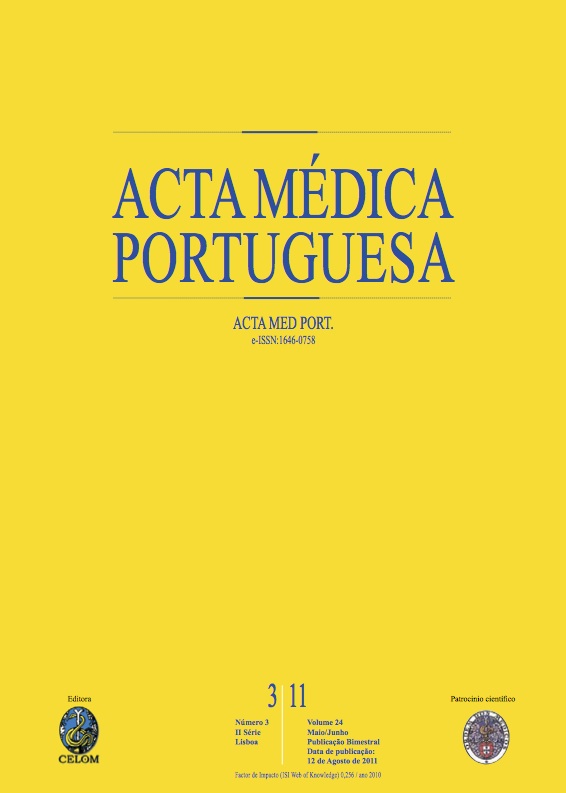Cytology role in healthy sexual life promotion of adolescent users of Centro de Atendimento a Jovens de Coimbra.
DOI:
https://doi.org/10.20344/amp.464Abstract
Adolescents usually have risky sexual behaviors which can result in an unwanted pregnancy and/or in transmission of sexually transmitted infections (STIs). Medical consultation can provide adequate and early sexual information. Medical surveillance and pelvic examination are essential for a healthy sexual life. Despite the availability of two vaccines against the major oncogenic types of human papilloma virus, the main agent of cervical cancer, performance of cytology is still needed. The purpose of this study was to characterize the group of adolescents/young adults who made their first cytology during 2005 and 2006 and determine the results of gynecological observation and first cytology.This is a retrospective study of users of Centro de Atendimento a Jovens (CAJ) of Centro de Saúde de Celas de Coimbra, who made their first cytology in 2005 and 2006. Clinical data were analyzed to determine the following parameters: demographic data, habits, sexual parameters, gynecological observation, symptoms, first and subsequent cytology results and consultations dropout rate until January 2009.During these two years, 172 first cytologies were performed. At first consultation in CAJ, the average age was 19 years old (15-24). At first intercourse, which occurred on average at 17,5 years old (13-21), 75,6% of girls used condom, 4,6% only pill and 16,3% did not use any contraceptive method. The mean number of sexual partners at first consultation was 1,6. The majority needed to take emergency pill (43/54). Gynecological observation was abnormal in 50,6% of cases, but only 10% reported symptoms. First cytology was performed, on average, three years after first intercourse, and was normal in 149 cases, unsatisfactory for evaluation in one case and abnormal in 22 (eight bacterial vaginosis, six with signs of inflammation, six candidiasis and two low grade intraepithelial lesions). Fifty nine per cent of adolescents made, at least, once more cytology. Three more cases of low grade intraepithelial lesions were detected. Dropout rate of consultations was 17%.In adolescence, isolated pill use increases the risk of transmission of STIs. Not using any contraceptive method may be related to the increasing use of emergency contraceptive pills. Abnormal gynecological examination may be present in asymptomatic girls. Dysplastic lesions (which are increasing in adolescence) have the same course of adulthood, supporting the need for screening and continuity of follow-up in young people.Downloads
Downloads
How to Cite
Issue
Section
License
All the articles published in the AMP are open access and comply with the requirements of funding agencies or academic institutions. The AMP is governed by the terms of the Creative Commons ‘Attribution – Non-Commercial Use - (CC-BY-NC)’ license, regarding the use by third parties.
It is the author’s responsibility to obtain approval for the reproduction of figures, tables, etc. from other publications.
Upon acceptance of an article for publication, the authors will be asked to complete the ICMJE “Copyright Liability and Copyright Sharing Statement “(http://www.actamedicaportuguesa.com/info/AMP-NormasPublicacao.pdf) and the “Declaration of Potential Conflicts of Interest” (http:// www.icmje.org/conflicts-of-interest). An e-mail will be sent to the corresponding author to acknowledge receipt of the manuscript.
After publication, the authors are authorised to make their articles available in repositories of their institutions of origin, as long as they always mention where they were published and according to the Creative Commons license.









